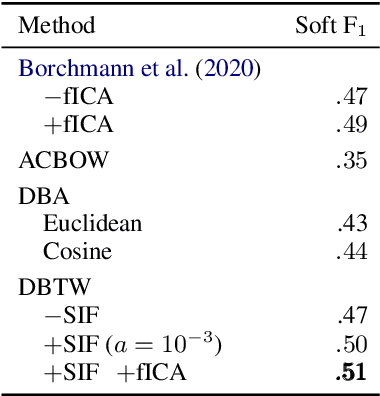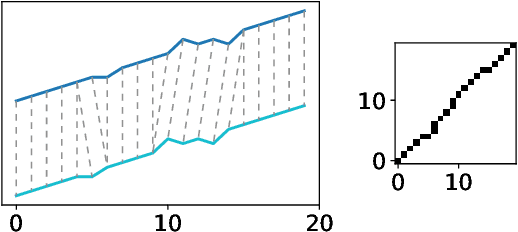Tomasz Górecki
Job recommendations: benchmarking of collaborative filtering methods for classifieds
Jan 19, 2023



Abstract:Classifieds provide many challenges for recommendation methods, due to the limited information regarding users and items. In this paper, we explore recommendation methods for classifieds using the example of OLX Jobs. The goal of the paper is to benchmark different recommendation methods for jobs classifieds in order to improve advertisements' conversion rate and user satisfaction. In our research, we implemented methods that are scalable and represent different approaches to recommendation, namely ALS, LightFM, Prod2Vec, RP3beta, and SLIM. We performed a laboratory comparison of methods with regard to accuracy, diversity, and scalability (memory and time consumption during training and in prediction). Online A/B tests were also carried out by sending millions of messages with recommendations to evaluate models in a real-world setting. In addition, we have published the dataset that we created for the needs of our research. To the best of our knowledge, this is the first dataset of this kind. The dataset contains 65,502,201 events performed on OLX Jobs by 3,295,942 users, who interacted with (displayed, replied to, or bookmarked) 185,395 job ads in two weeks of 2020. We demonstrate that RP3beta, SLIM, and ALS perform significantly better than Prod2Vec and LightFM when tested in a laboratory setting. Online A/B tests also demonstrated that sending messages with recommendations generated by the ALS and RP3beta models increases the number of users contacting advertisers. Additionally, RP3beta had a 20% greater impact on this metric than ALS.
Dynamic Boundary Time Warping for Sub-sequence Matching with Few Examples
Oct 27, 2020



Abstract:The paper presents a novel method of finding a fragment in a long temporal sequence similar to the set of shorter sequences. We are the first to propose an algorithm for such a search that does not rely on computing the average sequence from query examples. Instead, we use query examples as is, utilizing all of them simultaneously. The introduced method based on the Dynamic Time Warping (DTW) technique is suited explicitly for few-shot query-by-example retrieval tasks. We evaluate it on two different few-shot problems from the field of Natural Language Processing. The results show it either outperforms baselines and previous approaches or achieves comparable results when a low number of examples is available.
 Add to Chrome
Add to Chrome Add to Firefox
Add to Firefox Add to Edge
Add to Edge